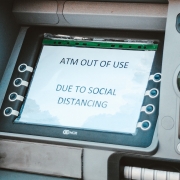Cyberattacks are not uncommon. Therefore, it is important to understand what the risks are.
Our digital activity could increase the number of cyber threats we receive. For example, logging onto Netflix, shopping online or using internet banking. If one of these accounts is hacked, log in information, messages or financial data could be accessed from different accounts across the internet.
How long would it take you to realise you were hacked?
Has anything been altered?
This is in relation to something which should be manually changed, such as a password, address or username.
Are any recent transactions unusual, not a known payment or a subscription?
Banks may also notify you of suspicious behaviour in your account.
Have you received an email which suggests unusual account activity?
It is important to pay attention to any email about an attempt to log in from a different device, accessing the account from a different location or a change in account details.
However, at the same time, beware of phishing attempts which claim that your account has been hacked.
Has a company contacted you about a data breach?
Data which could be collected in a data breach include an email, card details, passwords, phone numbers or an address. Companies should be quick to tell you that this has happened.
What to do if your account was hacked
If your account has been hacked, there are numerous things which could be done.
Depending on which account was hacked, contact the company which owns this account, for example, Netflix or Spotify. The organisation will have a policy and recovery steps for your account.
Please see the NCSC blog ‘Recovering a hacked account’ for 8 steps to take if you believe your account has been hacked.
How to protect your accounts
Here is some information which may help you regain control depending on your specific concern:
- Multi factor authentication: the NCSC’s new guidance which describes how to set up two-factor authentication (2FA)
- Use a password manager: Password Manager Pro is a secure vault for storing and managing shared sensitive information such as passwords or documents
- What information are you holding in old or unused accounts?
- Consider installing a VPN.
Additionally, you can forward a suspicious email onto the Suspicious Email Reporting Service through the email address: report@phishing.gov.uk









Leave a Reply
Want to join the discussion?Feel free to contribute!